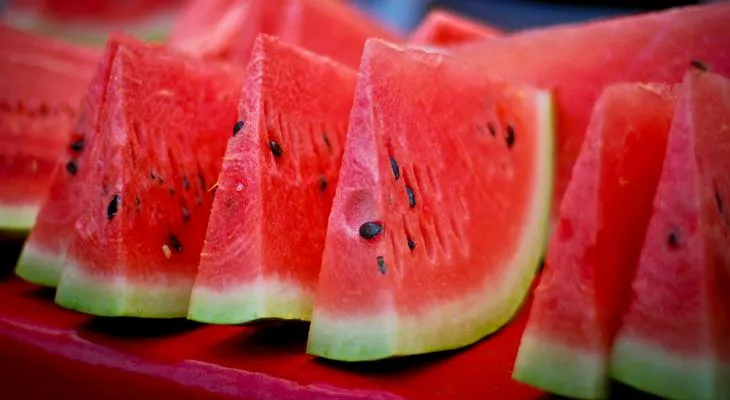This Renaissance Painting of Fruit Holds a Modern-Day Science Lesson
Hint: it’s in the watermelon
/https://tf-cmsv2-smithsonianmag-media.s3.amazonaws.com/filer/17/a3/17a371ac-8812-4faf-ac23-e3a3ce9ed664/stanchipainting_edit.jpg)
Paintings can be a window to more than the outmoded dress and strange customs of the past — sometimes, they have modern-day science lessons to impart, too. That's the case with Giovanni Stanchi’s 17th century still life of fruit, as Phil Edwards points out for Vox — just look for the watermelons.
Stanchi’s work, painted between 1645 and 1672 (and now up for auction at Christie’s), includes strange watermelons that look so foreign they could be from outer space in the bottom right corner. If watermelons looked like that in the Renaissance, then why do they look so different today? To delve into that question, Edwards spoke to James Neihuis, a horticulturist at the University of Wisconsin.
Watermelons had made their way to gardens in southern Europe by around 1600, writes Edwards, but they weren't domesticated by any means. For one thing, they were smaller, as most wild fruits are. They were also lighter than modern-day watermelons — the fleshy fruit surrounding the seeds is actually watermelon placenta, and it contained lower levels of lycopene, the protein that gives the fruit its red color.
Over time, humans have selectively bred watermelons to grow larger and produce higher levels of lycopene, brightening their insides in the process.

Another striking thing about the Stanchi watermelons has little to do with domestication, though, writes Christopher Jobson for This is Colossal. The placenta appears divided and swirls around the seeds. That’s a phenomenon called “starring,” and it’s a product of unfriendly growing conditions in which the plant has less access to pollen.
Still, Edwards notes, Stanchi’s watermelons are a reminder that looking at art from hundreds of years ago can reveal a lot about humans have molded wild plants into modern crops. In their mere difference from the watermelons available in modern-day grocery stores, the fruit points to centuries of careful breeding — and a past in which fruit looked much different from today.
/https://tf-cmsv2-smithsonianmag-media.s3.amazonaws.com/accounts/headshot/Screen_Shot_2014-01-27_at_12.05.16_PM.png)
/https://tf-cmsv2-smithsonianmag-media.s3.amazonaws.com/accounts/headshot/Screen_Shot_2014-01-27_at_12.05.16_PM.png)